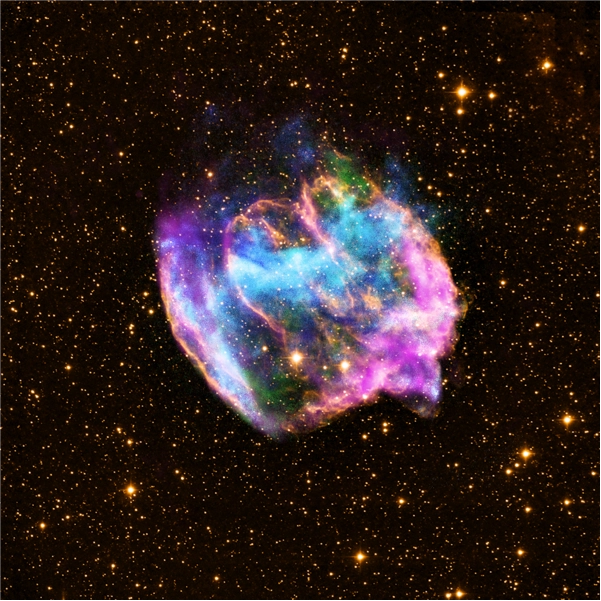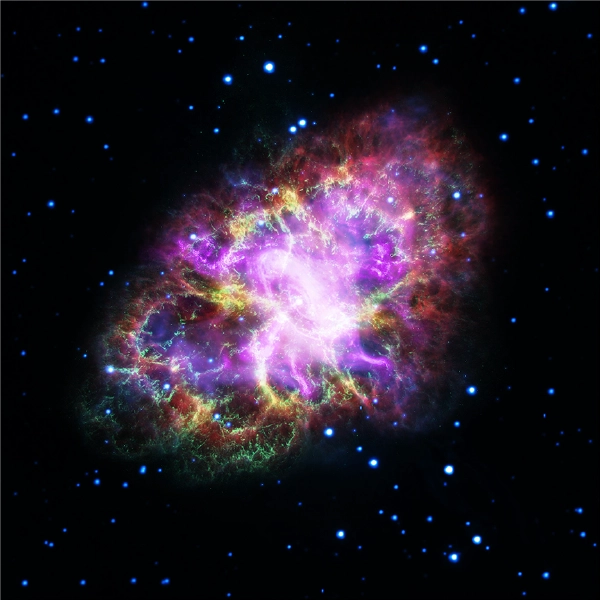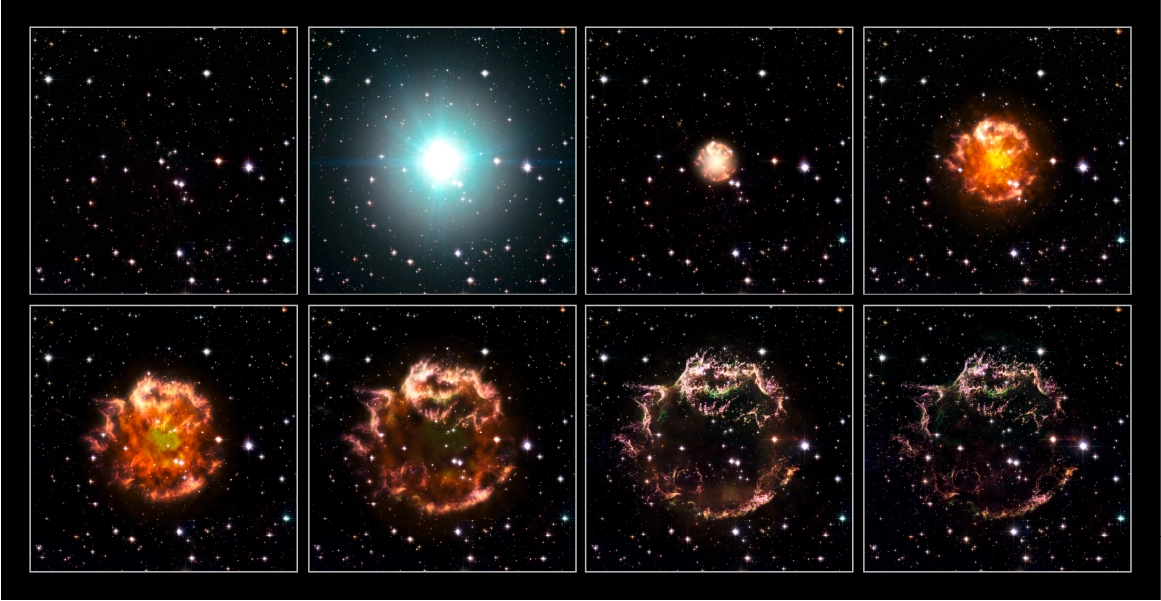How can the weakly interacting neutrinos tear apart a star? Third article in series of stellar explosions
Neutrinos are extremely tiny. A trillion of them pass through your body at any second. They can even pass untraced through a lead block of a whopping length of over one light year. Similar to the cosmological cosmic microwave background, remnant neutrinos from one second old universe pervades the entire spacetime, and yet it is undetectable through current technology.
The neutrinos were first theorized by Wolfgang Pauli to explain the energy distribution of electrons in an inverse beta decay.
\[\begin{equation} \overline{v_{e}} + p = e^{+} + n\end{equation}\]They interact so weakly with any kind of matter that it took almost 60 years to build an experimental setup to detect them.
 Energy spectrum of beta particles(electrons) in a beta decay. The distribution implied the existence of another particle which could carry away the energy to produce such a spectrum of energy. If no other particle was emitted the energy of all electrons would have been as marked by the red line.
Energy spectrum of beta particles(electrons) in a beta decay. The distribution implied the existence of another particle which could carry away the energy to produce such a spectrum of energy. If no other particle was emitted the energy of all electrons would have been as marked by the red line.
When a massive star has evolved to form layers of different elements and has iron sitting at its centre, and simultaneously the gravitational force pushing it inward, a series of reactions begins. A battle between repulsive electromagnetic forces and gravity. Let’s look at the following statements first to apply it in the entire process at such a stage.
-
The fusion of iron is endothermic: An atomic nucleus is bound together due to the strong force. The strong force acts between both protons and neutrons, And overcomes the electromagnetic repulsions between the protons in all stable nuclei. But strong force is extremely short ranged. And, as the size of the nuclei approaches that of Iron, the influence of innermost nucleons on the outermost reduces to almost zero. This is the saturation property of strong force. Due to such saturation the binding energy per nucleon is highest for an iron56 nucleus. Which implies, the fusion of Iron nuclei, will produce nuclei that have less binding energy per nucleon. In other words, the process of fusing iron nuclei needs an outside energy supply - it’s an endothermic reaction.

-
Neutrinos are trapped by matter at nuclear density. Sure, a neutrino can pass untraced through one light year long lead block, but one light year lead block consists of atoms, and atoms are mostly empty space. The volume occupied by a nucleus is less than 1% of the total volume of any atom. Other 99% between electron shells and nucleus, is empty. But now think of a sea of ~\(10^{57}\) neutrons and protons packed together at nuclear densities of \(10^{15}\: \text{kg}\: {\text{m}}^{-3}\); Such is a core of a massive star which is on verge of collapsing; no free atoms, and no empty space, but nucleons packed together. Can neutrinos escape such a system without scattering and interacting? They cannot!
Evolution of Massive Stars: The Core-Collapse Progenitors
All those stars which have initial mass more than 8 times the mass of the Sun, can be called as the massive stars. These stars have higher gravitational pressure, hence they burn their nuclear fuel quickly enough to generate the required amount of pressure. In their short lifetimes, they also tend to have dramatic explosive phases. Spectacular flashes of cosmic fireworks, ejection of outer mass layers are quite common throughout their evolution. This huge mass ejectas, leads to development of a collossal and highly dynamic circumstellar medium around the star. High velocity winds pervades the circumstellar medium.
 A supergiant giant ejecting monstrously massive mass ejecta. Such mass ejectas forms the dynamic circumstellar medium.
A supergiant giant ejecting monstrously massive mass ejecta. Such mass ejectas forms the dynamic circumstellar medium.
All these are similar to coronal ejections from the sun and solar wind, but they happen at massive scales - huge amounts of mass, extremely high speed, and the temperature over 50000 K.
These massive stars quickly evolves by burning their nuclear fuel into the following onion-layer structure.
 Onion shell structure of a massive star. At this stage the core has iron which cannot be fused to produce energy. The stellar structure becomes gravitationally unstable at this point.
Onion shell structure of a massive star. At this stage the core has iron which cannot be fused to produce energy. The stellar structure becomes gravitationally unstable at this point.
What happens after the formation of above shell structure, is the initiation of core-collapse supernovae.
Hans Janka is one of the current-day leading astrophysicists in the domain of core-collapse supernovae. We will use the following six major steps of core collapse explosion described by Hans Janka.
-
Gravitational Instability and Collapse of the Stellar Core: The nuclei and the free protons in the inner iron core of our massive star, start to capture free electrons through an inverse decay process. The nuclei also emits alpha particles. At the end, basically, the neutrons are produced along with neutrinos with each beta decay. At low mass densities, these neutrinos escape the core quite easily. But with increasing numbers of neutrons and infalling matter, as the density reaches around \(10^{11}\: \text{kg}\: {\text{m}}^{-3}\), the neutrinos themselves begin to diffuse! The result is neutrino trapping!
-
Core Bounce and Shock Formation: The infalling matter continues to dive inward at supersonic speeds, till it reaches the ~\(2.7\times 10^{14}\: \text{kg}\: {\text{m}}^{-3}\). This density defines the nuclear saturation state, beyond which the compression of neutrons is impossible. The infalling matter exceeds this density slightly for a split of second, and the result of which, a recoil force is exhibited, and the implosion bounces back! The shock wave of the recoil, travels outward carrying the matter with it. The implosion has turned into a explosion!
 The implosion has turned into an explosion due to core bounce. Artistic illustration of Supernova shock breakout.
The implosion has turned into an explosion due to core bounce. Artistic illustration of Supernova shock breakout. -
Shock Stagnation and Shock-breakout Neutrino Burst: The shock is powered by the ‘recoil’ for a very short time. During which the iron core has completely disintegrated, and its density too reduced, due to the mass carried away and increase in radii by the shock wave. The trapped neutrinos are set free. This results in the shock-breakout neutrino burst. About \(10^{57}\) neutrinos trapped inside escape at once carrying 99% of the total energy generated by the explosion.
-
Neutrino Heating: The escaping neutrinos carry away the energy from outer regions. At the same time neutrinos and antineutrinos are radiated away by the innermost core. The first effect decreases the energy, but the energy provided by the second effect, re-energize the shock wave to expand outward.
-
Shock Revival: As the shock is fed by neutrinos emitted from inner regions, the hotter gas expands more rapidly. The cooler gas falls inwards, where it can more easily absorb energy and expand. If the pressure generated by this neutrinos is energetic enough to win the battle against infalling cooling gas, a runaway shock expansion sets in.
 Image of supernova remnant W49B. It is still visible in X-rays, radio and infrared wavelengths. Credits:(X-ray: NASA/CXC/MIT/L.Lopez et al.; Infrared: Palomar; Radio: NSF/NRAO/VLA)
Image of supernova remnant W49B. It is still visible in X-rays, radio and infrared wavelengths. Credits:(X-ray: NASA/CXC/MIT/L.Lopez et al.; Infrared: Palomar; Radio: NSF/NRAO/VLA) -
Explosion and Nucleosynthesis: The neutrinos escape with major fraction energy, the rest of matter and radiation interact to produce EM radiation across the spectrum. The circum stellar medium fuels this emissions. The whole dramatic explosion, triggered by the tiny, corpuscule neutrinos, will keep expanding and emitting radiation for hundreds years.
 A supernova which exploded in 1054 is still visible across the EM spectrum. This image combines data from five different telescopes: the VLA (radio) in red; Spitzer Space Telescope (infrared) in yellow; Hubble Space Telescope (visible) in green; XMM-Newton (ultraviolet) in blue; and Chandra X-ray Observatory (X-ray) in purple.
A supernova which exploded in 1054 is still visible across the EM spectrum. This image combines data from five different telescopes: the VLA (radio) in red; Spitzer Space Telescope (infrared) in yellow; Hubble Space Telescope (visible) in green; XMM-Newton (ultraviolet) in blue; and Chandra X-ray Observatory (X-ray) in purple.
The remnant core consisting of neutrons, and supported against gravity by the neutron degeneracy pressure is left behind by the expanding shells. The nucleosynthesis reactions triggered by these explosions in the expanding shell produce high atomic mass elements through endothermic radioactive processes.
 An animation sequence of a supernova. Different stages of explosions as described in this article are depicted. Credits: (NASA, ESA, and the Hubble Heritage STScI/AURA)-ESA/Hubble Collaboration. Acknowledgement: Robert A. Fesen (Dartmouth College, USA) and James Long (ESA/Hubble))
An animation sequence of a supernova. Different stages of explosions as described in this article are depicted. Credits: (NASA, ESA, and the Hubble Heritage STScI/AURA)-ESA/Hubble Collaboration. Acknowledgement: Robert A. Fesen (Dartmouth College, USA) and James Long (ESA/Hubble))
The formation of neutron stars, the entire nucleosynthesis process driven by the whole bunch of ~\(10^{57}\) neutrinos and description of other observational properties of core collapse supernovae will make up another article of this length. So stay tuned with Horizon’s stellar explosion series to read and learn. The Neutrino Bombs, Superluminous Supernova, Hypernovae, Kilonovae, formation of Neutron stars and Black holes and more will be discussed in the upcoming articles.
References
- Srinivasan, Ganesan. Life and Death of the Stars. Springer Science & Business Media, 2014.
- Branch, David, and J. Craig Wheeler. Supernova Explosions. Springer, 2017.
- Alsabti, Athem W., and Paul Murdin, editors. Handbook of Supernovae. Springer International Publishing, 2016.
